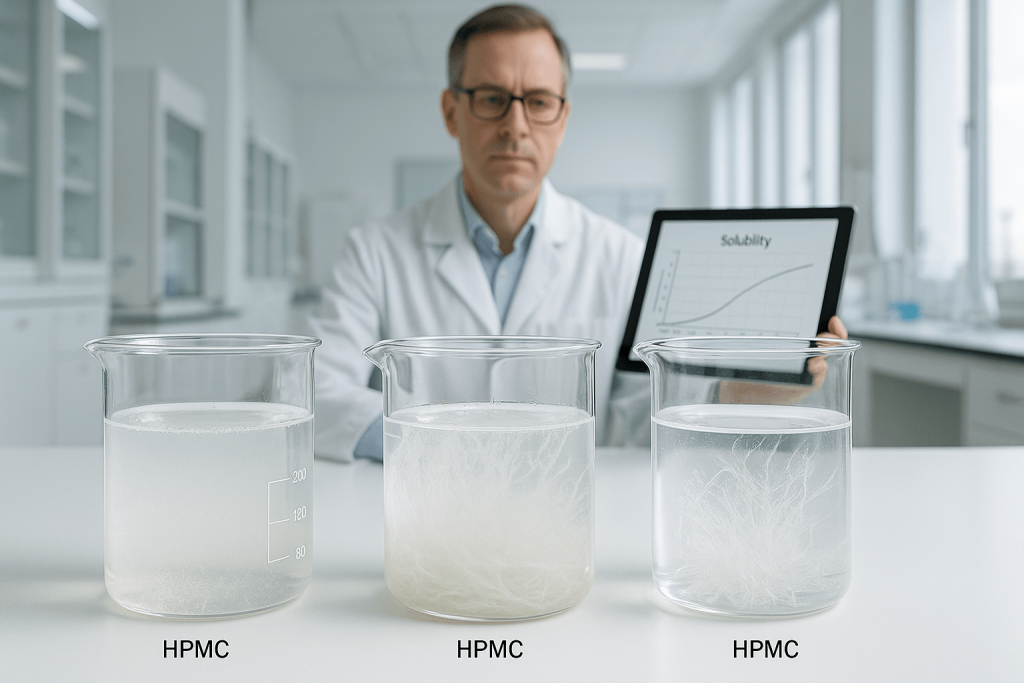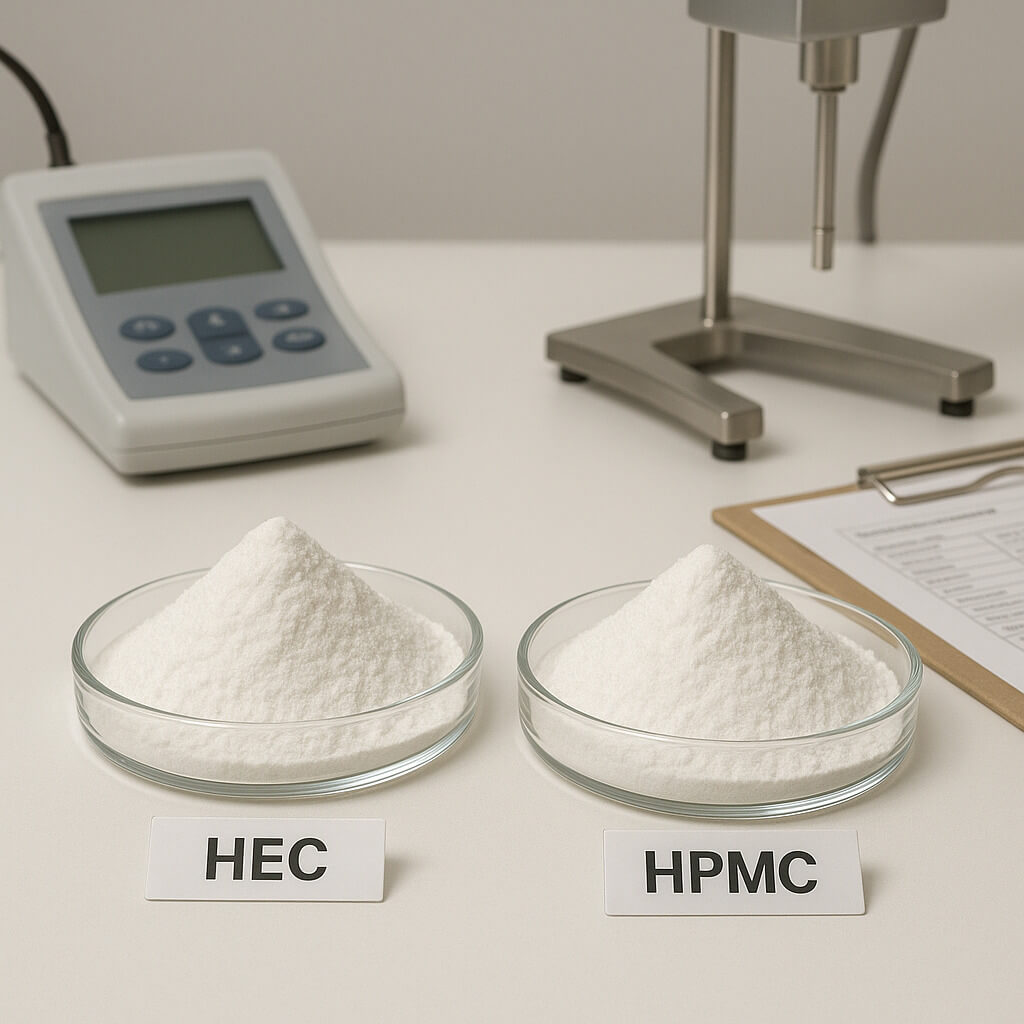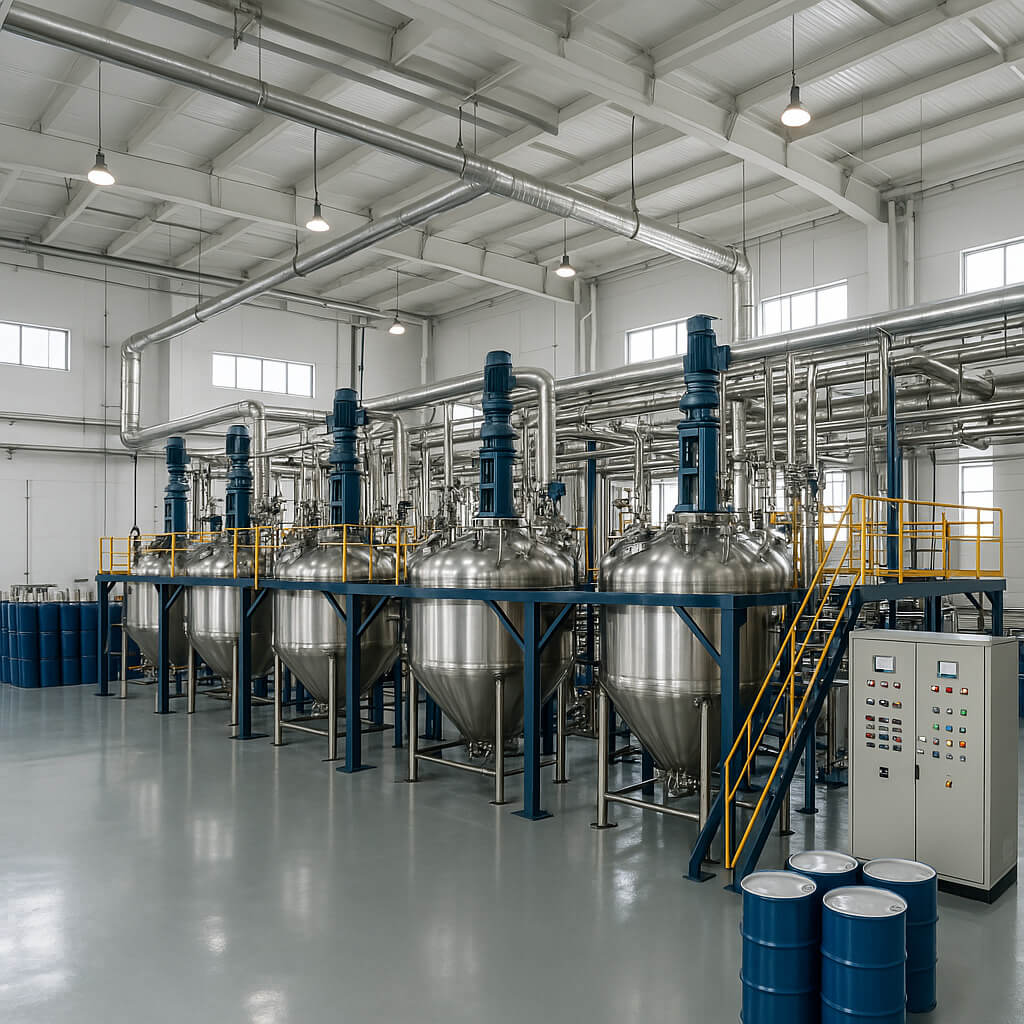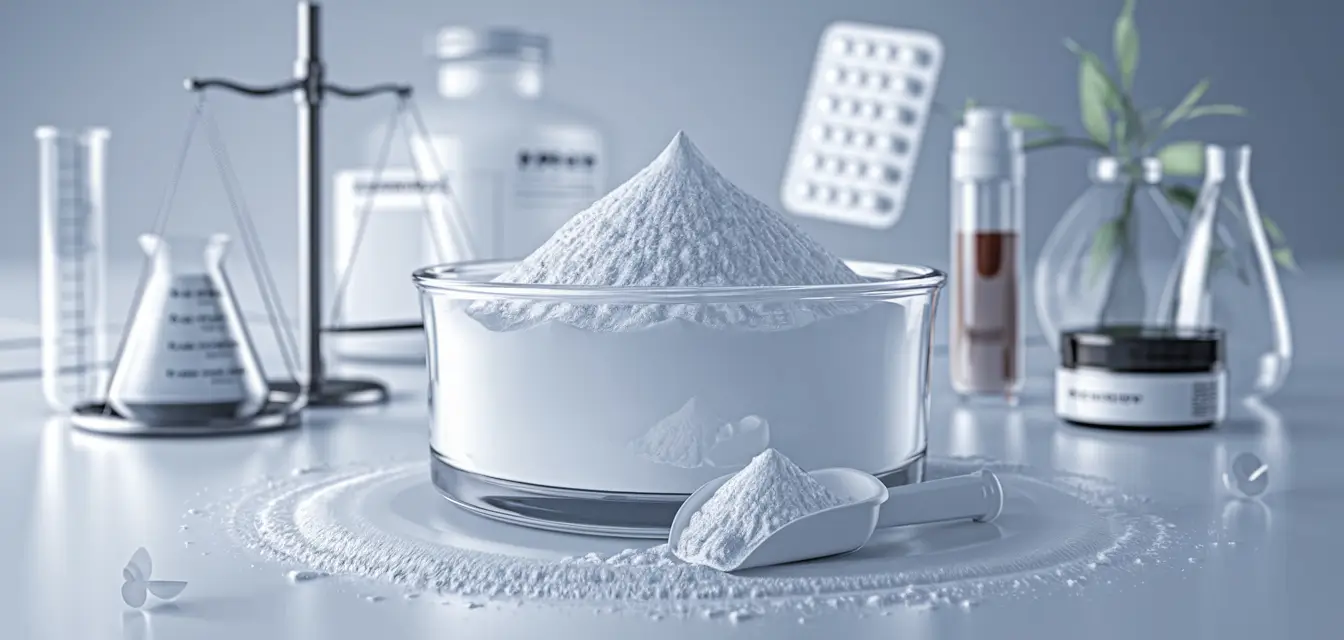When working with Hydroxypropyl Methylcellulose (HPMC), selecting the right grade for your application is crucial. This article will guide you through the various HPMC grades available, helping you understand their properties and applications across different industries. Ready for the good part? Let’s explore how to choose the right HPMC grade for your needs and the factors that influence your decision.

1. What Are HPMC Grades and Why Do They Matter?
HPMC grades refer to different variations of Hydroxypropyl Methylcellulose, each with distinct properties such as viscosity, solubility, and gel strength. These grades are designed to meet specific needs across industries like construction, pharmaceuticals, and food processing. What’s the real story? The grade you choose will significantly impact the performance and efficiency of your product, whether it’s a construction adhesive or a pharmaceutical tablet.
The main characteristics that define HPMC grades are viscosity, solubility, and the degree of substitution, which affects how the cellulose derivative behaves in formulations. These factors determine how HPMC interacts with water, the ease with which it dissolves, and its ability to form gels or control the release of active ingredients.
The choice of HPMC grade directly affects product performance. For example, high-viscosity grades are ideal for thickening applications in pharmaceuticals and food products, while lower viscosity grades are better for improving workability in construction materials.
| درجة HPMC | نطاق اللزوجة | Common Application |
|---|---|---|
| اللزوجة المنخفضة | 100-500 mPas | Construction materials, coatings |
| اللزوجة المتوسطة | 500-2,000 mPas | الأدوية والأغذية |
| اللزوجة العالية | 2,000-10,000 mPas | Drug delivery systems, coatings |
2. How Are HPMC Grades Determined?
The determination of HPMC grades depends on several key factors that influence the material’s performance in specific applications. Here’s the kicker—understanding these factors can help you select the right grade for your specific needs, ensuring optimal results.
Viscosity is the most critical factor in determining HPMC grade. The viscosity of HPMC is measured in millipascal-seconds (mPas), with higher values indicating thicker solutions. For example, a high-viscosity grade will be more suitable for controlled-release formulations, as it can slow down the release of active ingredients.
Another factor that affects HPMC grade is the degree of substitution, which refers to how many hydroxypropyl and methyl groups are added to the cellulose structure. The higher the degree of substitution, the more soluble the HPMC becomes, which can be useful for different applications. For construction materials, the right viscosity and solubility are necessary to achieve the desired workability and bonding strength.
Finally, the manufacturing process itself plays a role in grade determination. Different production methods, such as variations in the reaction temperature and time, can affect the molecular weight and viscosity of the final product.
| Key Factor | Impact on HPMC Grade |
|---|---|
| اللزوجة | Affects thickness and solubility |
| درجة الاستبدال | Impacts solubility and gel strength |
| عملية التصنيع | Determines molecular weight and consistency |
3. What Are the Common HPMC Grades Available?
HPMC is available in a wide range of grades, each tailored for different industrial applications. This is where it gets interesting—choosing the right grade depends largely on the specific requirements of your formulation, whether it’s for pharmaceuticals, construction, or food.
Low-viscosity grades of HPMC are commonly used in dry mixes for construction materials, where their primary function is to improve workability without significantly increasing the thickness of the material. These grades are also used in coatings and paints to enhance their flow properties.
Medium-viscosity grades are typically used in pharmaceutical applications, such as tablets and capsules, where they act as binders and stabilizers. They help ensure that the ingredients in the tablets are evenly distributed and that the tablets hold together without disintegrating too easily.
High-viscosity grades are used in applications where a thickening effect is required, such as in controlled-release drug formulations or in cosmetics. These grades are also used in food products, where they help stabilize emulsions and improve texture.
| درجة HPMC | اللزوجة | طلب |
|---|---|---|
| اللزوجة المنخفضة | 100-500 mPas | Construction, coatings |
| اللزوجة المتوسطة | 500-2,000 mPas | Pharmaceuticals, food formulations |
| اللزوجة العالية | 2,000-10,000 mPas | Drug delivery, cosmetics, food |
4. How Does HPMC Grade Impact Construction Applications?
In the construction industry, HPMC plays a crucial role in improving the performance of various materials. But here’s the kicker—the right grade of HPMC can make the difference between a product that works well and one that doesn’t.
Low-viscosity HPMC grades are commonly used in dry mortar and tile adhesives. These grades help improve the workability of the mixture, making it easier to apply and spread. They also improve adhesion and extend the open time of the product, giving workers more time to adjust and reposition tiles before the adhesive sets.
High-viscosity grades, on the other hand, are often used in plasters and coatings. They help the material retain moisture, which is crucial for proper curing. Additionally, high-viscosity HPMC grades can enhance the bonding strength and durability of the final product, ensuring it performs well over time.
Choosing the right HPMC grade for your construction application can help you optimize both cost and performance. The correct viscosity ensures that the material is easy to apply, adheres properly, and retains moisture to cure effectively.
| طلب | درجة HPMC | Impact |
|---|---|---|
| Mortar & Adhesives | اللزوجة المنخفضة | Improves workability and open time |
| Plasters & Coatings | اللزوجة العالية | Improves moisture retention and curing |
| Dry Mixes | Low to Medium Viscosity | Enhances application and performance |
5. How Does HPMC Grade Affect Pharmaceutical Formulations?
In the pharmaceutical industry, selecting the right HPMC grade is vital for ensuring the stability, release, and bioavailability of active ingredients. What’s the real story? HPMC grades directly affect how drugs are delivered and how the body absorbs them.
Medium-viscosity HPMC grades are often used as binders in tablets. They ensure that the tablet holds together and that the active ingredients are evenly distributed. These grades also help control the dissolution rate of the drug, ensuring it’s released into the body in a controlled manner.
High-viscosity grades are frequently used in controlled-release drug formulations, where they form a gel that slows down the release of the active ingredients. This ensures that the medication is delivered over an extended period, reducing the need for frequent dosing and improving patient compliance.
In addition to these functions, HPMC grades can also be used as stabilizers in suspensions and emulsions, ensuring that the ingredients stay properly mixed and do not separate over time.
| طلب | درجة HPMC | وظيفة |
|---|---|---|
| الأجهزة اللوحية | اللزوجة المتوسطة | Binder, stabilizer |
| Controlled-release | اللزوجة العالية | Slow drug release, sustained effects |
| Suspensions | Medium to High Viscosity | Stabilizer, ensures uniform consistency |
6. What Are the Applications of HPMC Grades in Food Products?
In the food industry, HPMC plays an essential role in improving texture, stability, and shelf life. This is where it gets interesting—different HPMC grades are used depending on the specific needs of the product.
Low-viscosity grades are commonly used in beverages and sauces to control thickness and improve flow properties. They can also help stabilize emulsions, ensuring that ingredients like oil and water do not separate.
Medium-viscosity HPMC grades are used in dairy products such as yogurt and ice cream, where they enhance texture and provide a smooth, creamy consistency. These grades are also used in gluten-free baked goods to mimic the texture of wheat-based products.
High-viscosity grades are used in food products that require thickening or gel formation, such as jellies, puddings, and dressings. These grades help maintain the product’s consistency and prevent ingredient separation during storage.
| طلب | درجة HPMC | وظيفة |
|---|---|---|
| Beverages & Sauces | اللزوجة المنخفضة | Controls thickness and stabilizes emulsions |
| منتجات الألبان | اللزوجة المتوسطة | Improves texture and consistency |
| Gelled Products | اللزوجة العالية | Thickens and stabilizes the final product |
7. How Do HPMC Grades Influence Cosmetic Formulations?
In cosmetics, HPMC is often used for its ability to thicken, stabilize, and emulsify products. Ready for the good part? The grade of HPMC you choose will affect everything from the texture of your cream to the performance of your shampoo.
Low-viscosity HPMC grades are used in facial cleansers, shampoos, and body washes to improve their consistency and flow properties. These grades help create smooth, easy-to-apply formulations without making them too thick or heavy.
Medium-viscosity grades are often used in creams and lotions, where they help stabilize emulsions and improve the overall texture. They also provide a silky, smooth feel to the product and enhance its spreadability on the skin.
High-viscosity grades are used in thick creams, gels, and serums, where a more substantial texture is needed. These grades can also help stabilize emulsions in products like hair conditioners and facial moisturizers.
| طلب | درجة HPMC | وظيفة |
|---|---|---|
| Shampoos & Cleansers | اللزوجة المنخفضة | Improves consistency, enhances flow |
| Creams & Lotions | اللزوجة المتوسطة | Stabilizes emulsions, improves texture |
| Gels & Serums | اللزوجة العالية | Provides thickness, stabilizes emulsions |
8. How to Choose the Right HPMC Grade for Your Application?
Choosing the correct HPMC grade requires careful consideration of several factors, including the intended application, desired viscosity, and the specific requirements of your product. What’s the real story? Here’s a breakdown of the factors you need to evaluate when selecting an HPMC grade.
First, determine the viscosity level that is necessary for your application. If you need a product with a thicker consistency, opt for a higher viscosity grade. For applications that require more fluidity, a lower viscosity grade may be more appropriate.
Next, consider the solubility and gel strength of the HPMC. Different grades have varying degrees of solubility, which can impact how the material behaves in different environments. Also, think about the desired release profile for pharmaceutical products—higher viscosity grades are better for controlled-release formulations.
Finally, assess the cost-effectiveness of each grade. While higher viscosity grades may offer superior performance, they are also more expensive. It’s essential to balance performance with budget constraints.
| Application Criteria | درجة HPMC | Key Consideration |
|---|---|---|
| اللزوجة | Low to High Viscosity | Determines thickness, flow, and stability |
| الذوبان | Low to High Viscosity | Impacts how HPMC dissolves in formulations |
| Cost vs. Performance | All Grades | Balancing performance with budget constraints |
9. What Are the Challenges in Using HPMC Grades?
While HPMC offers numerous benefits, there are also challenges in selecting and using the right grade. But here’s the kicker—the wrong grade can lead to product performance issues, cost inefficiencies, and manufacturing challenges.
One common challenge is ensuring consistent quality across different batches of HPMC. Variations in viscosity, solubility, and other properties can result in performance inconsistencies, especially when working with large-scale formulations.
Cost is another challenge. Higher viscosity grades are often more expensive, but they are sometimes necessary for optimal performance. Balancing cost with performance requires careful consideration of the end product’s needs and the available budget.
Finally, achieving the right dissolution and gel formation can be tricky, especially when working with multiple ingredients that affect HPMC’s behavior. Proper testing and quality control are essential to ensure that the HPMC performs as expected.
| تحدي | حل |
|---|---|
| جودة غير متسقة | Regular testing and reliable sourcing |
| Cost Considerations | Balance performance with budget |
| Gelation Issues | Conduct thorough formulation testing |
10. How to Optimize HPMC Grade Selection for Cost and Performance?
Optimizing HPMC grade selection involves balancing cost with performance, ensuring that the chosen grade delivers the desired functionality without exceeding budget. This is where it gets interesting—selecting the right grade can lead to long-term cost savings by improving product quality and reducing waste.
Start by thoroughly understanding your application’s requirements, including viscosity, solubility, and other key factors. Match these requirements to the most appropriate HPMC grade, considering both performance and cost.
Consider working with suppliers who offer flexibility in customizing HPMC grades to fit your exact needs. This can help reduce costs while maintaining high performance.
| Optimization Criteria | حل | فائدة |
|---|---|---|
| متطلبات اللزوجة | Choose the right grade for desired consistency | Improved product performance |
| إدارة التكاليف | Balance performance and budget | Long-term savings and optimal quality |
| التخصيص | Work with flexible suppliers | Cost-effective, tailored solutions |
خاتمة
Choosing the right HPMC grade is a crucial decision that impacts product performance, cost, and efficiency. Ready for the good part? By understanding the different grades, their applications, and the factors influencing your choice, you can optimize your formulations and achieve superior results across industries. Whether you’re in construction, pharmaceuticals, or food production, selecting the right HPMC grade will ensure the success of your product.
قسم الأسئلة الشائعة
Q1: ما هو هيدروكسي بروبيل ميثيل السليلوز (HPMC)؟
HPMC is a cellulose derivative used as a thickening agent, binder, and stabilizer in various industries, including construction, pharmaceuticals, and food.
Q2: How are HPMC grades determined?
HPMC grades are determined based on factors like viscosity, solubility, and the degree of substitution, which affect the material’s performance in different applications.
Q3: How does HPMC grade impact pharmaceutical formulations?
The grade of HPMC used in pharmaceuticals affects its function as a binder, stabilizer, and controlled-release agent, ensuring consistent drug delivery and performance.
Q4: What are the applications of HPMC grades in food products?
HPMC grades are used in food to improve texture, stabilize emulsions, and extend shelf life, with different grades offering specific benefits for various food products.
Q5: How do I choose the right HPMC grade for my product?
Choosing the right HPMC grade involves considering factors like viscosity, solubility, application requirements, and cost, ensuring the material meets both performance and budget needs.




